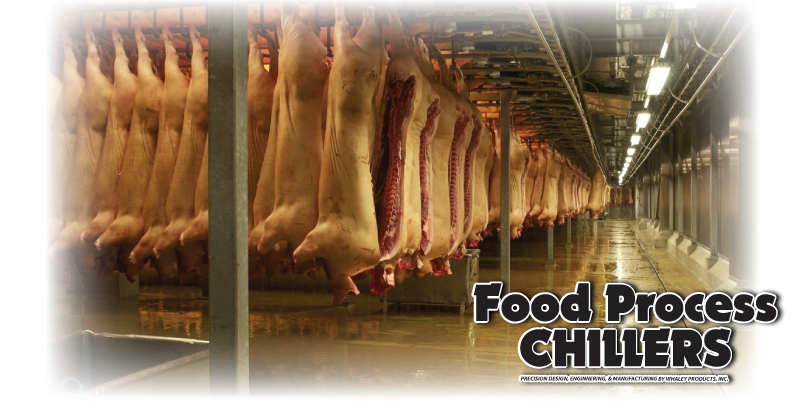Meat Chilling and Freezing
Meat including beef, veal, lamb, pork, and poultry can be cold stored before processing, or frozen/cold storage after processing. Cold temperatures are vital to meat production in controlling the growth of bacteria, texture, the breakdown of tissue, and the development of taste.
Chilling as seen in baked goods, and vegetables, slows the growth of deterioration in the tissues and cells of the organism. Chilling of the meat is done after dousing (cleaning the meat) and before processing. The raw meat is kept in chamber where low air temperature, high humidity, high refrigeration capacity, and high air speed. The air temperature must be in the range of 33°F but now lower than 32 °F. Forced air is the most common, but hydro-cooling can be used as well (poultry). Continuous tunnels are used for chilling meat as well. This process is used for pork and mutton. Chilling of meat is completed when the warmest point has reached about 44°F. This can usually occur between 16-24 hours for small bodies and 48 hours for large bodies.
Freezing meat is used to exporting the meat to another location for sales, or storing meat to be processed later. Freezing, like with other food products forms ice crystals within the product itself. The quicker the freezing the smaller the crystals. Freezing is done in blast chillers with air temperatures being between -22°F and -31°F. To meet proper freezing techniques, the inside temperature of the meat must be 12°F. Once frozen, the product can be packaged and process.



